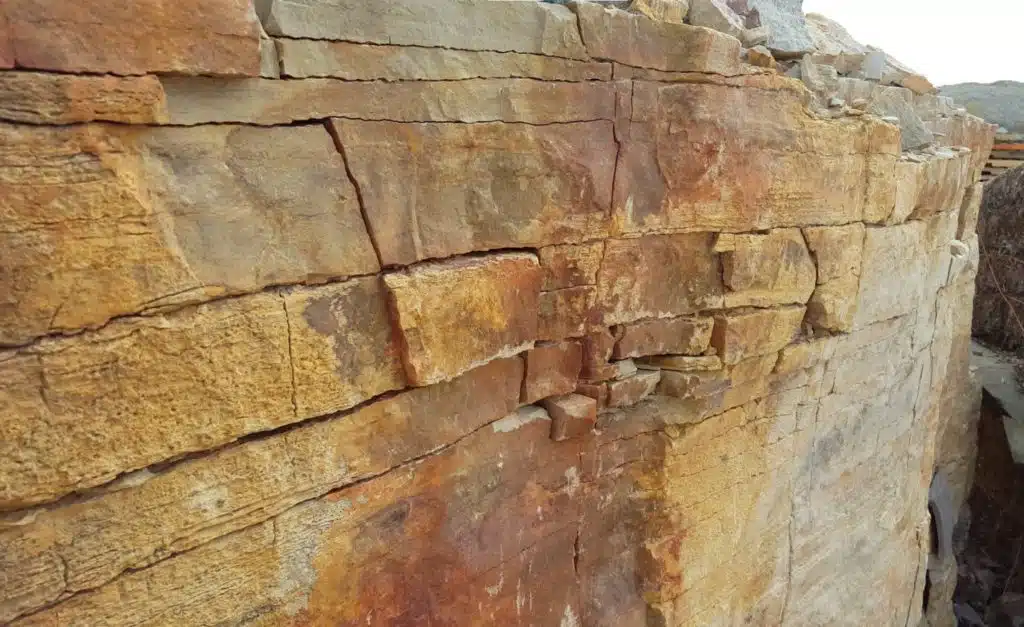
“Always look beyond what you can see.”
Mark A. Cooper
Buechel Stone’s history starts with the land of our founders, Francis and Alyce Buechel. The story of their start has been told before, most recently in a 2018 article I wrote about them starting the business and betting the farm.
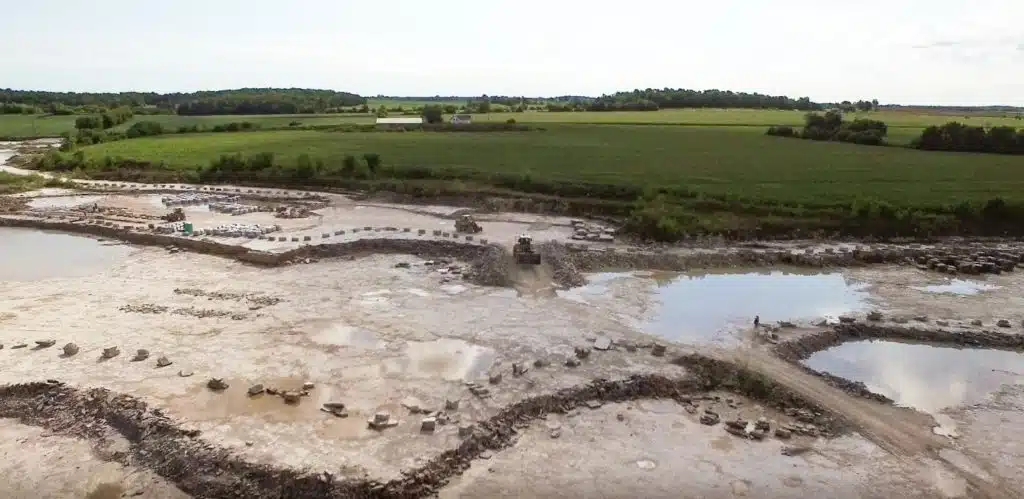
With the unique stone they had on their land, they built a business that has grown to become a national operation. Like Francis and Alyce, I’ve developed an eye for seeing what others might not after personally working in this industry for 35 years. Where others might see just a ledge, or a mountain, or maybe a single stone poking out of a field, I’ve learned to see what might be hidden beneath the surface to know if there is something of beauty just waiting for the world to see.
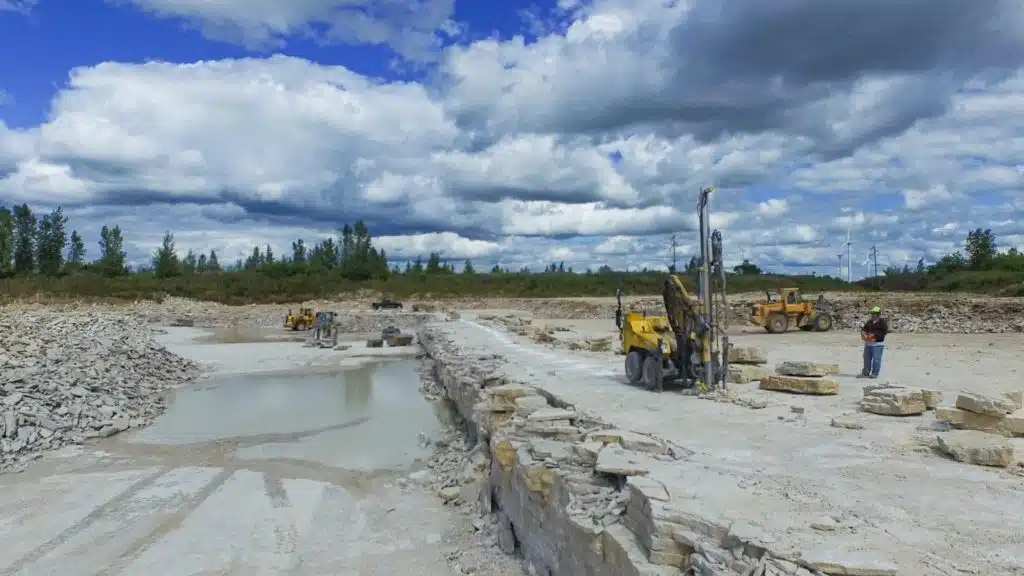
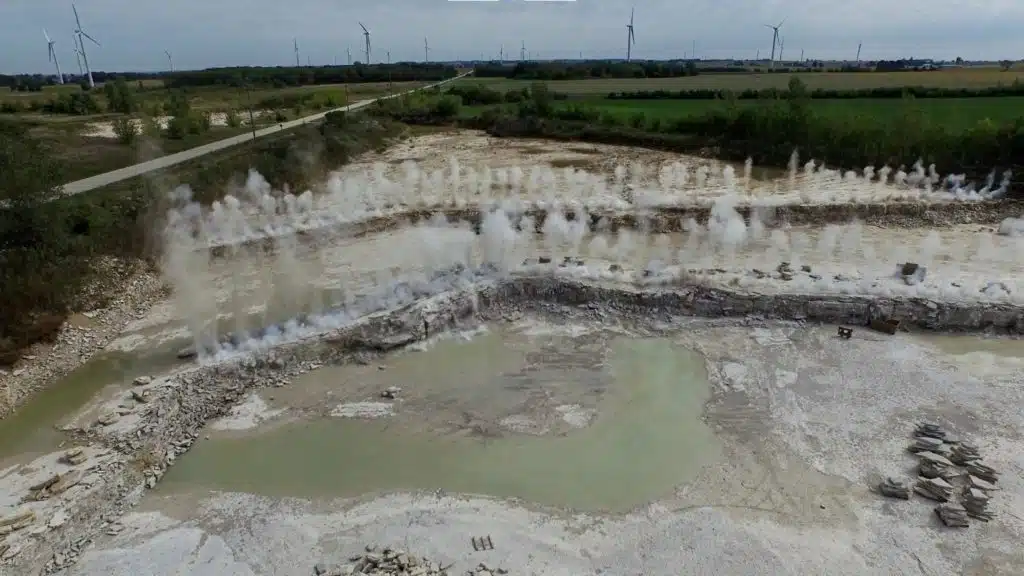
As Buechel Stone has grown, we have opened and operated additional quarries around the country, all of which are vastly different. Our original quarries contain dolomitic limestone. This is a very hard stone that starts as limestone and through time, heat, water, and compression, the calcium in the limestone was replaced with magnesium. This type of stone is what we knew and worked with for a little over 50 years. It’s quite simple to quarry: remove the overburden, drill and set off a light blast to loosen the stone layers, and quarry it out with a front-end loader. Not only is it fairly straightforward, the layers are also quite flat. The vertical and horizontal seams in the stone make for excellent quarrying and building stone functionality.

But the United States has more to offer than the dolomitic limestone found in Wisconsin. To become a natural stone company with the best domestic stone selection in the industry, we needed to expand our quarrying operations. This was not an easy task, and we are still learning how different the quarrying process is in other parts of the country.

When Buechel Stone opened operations in North Carolina’s Blue Ridge Mountains, we knew it was going to be different from what we were used to, and we were excited about it. Quarrying in the mountains really helps you appreciate how amazing the formation of the world is. As you could see in the pictures from Wisconsin, everything sat nice and flat. You probably learned in your Geography 101 class how mountains are formed in several ways. One formation happens when layered (aka sedimentary) stones are forced into each other at a fracture line. This force takes these horizontal layers and pushes them vertically. As you can see in the image above, extracting this stone takes a little more planning.
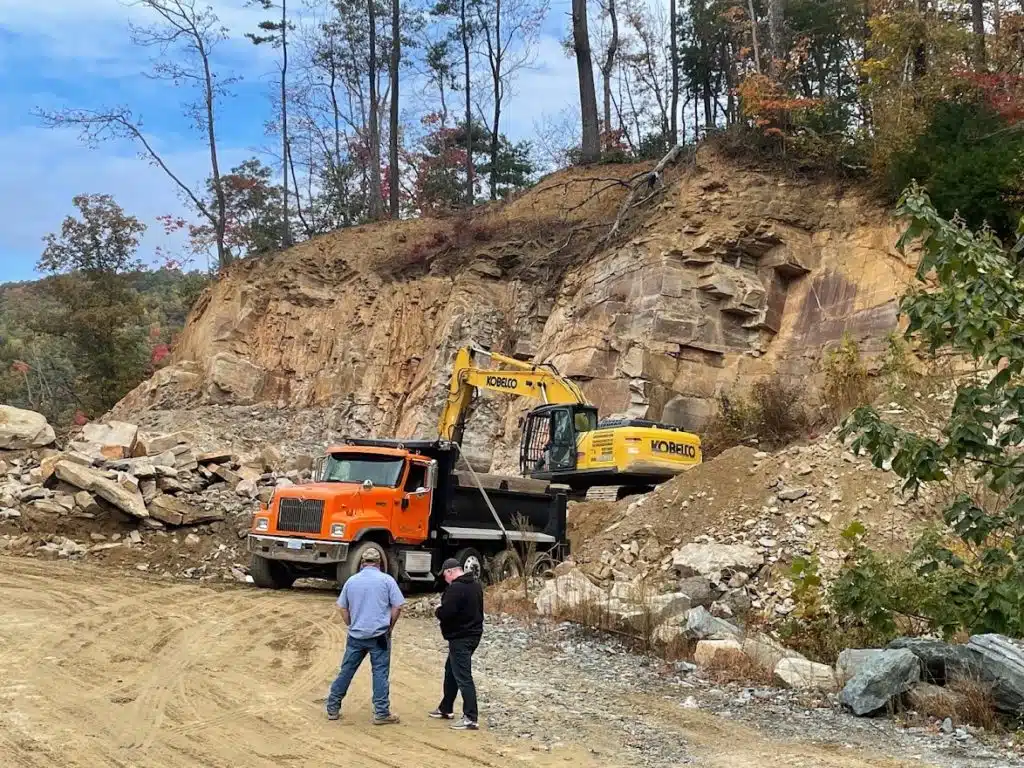
The layers in the mountains run more vertical than horizontal, so we use excavators for quarrying. The excavators are equipped with a thumb to pick up and move around the stone, which is helpful for loading dump trucks when we move the raw stock from the mountainside to the fabrication site.
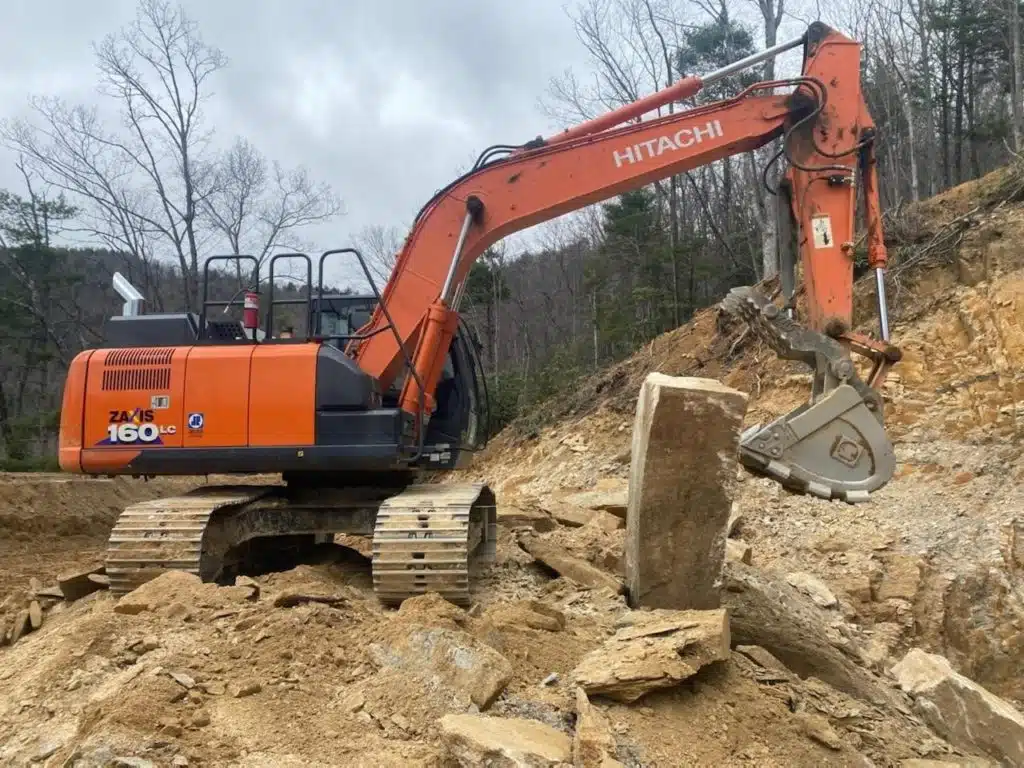
When Buechel Stone started quarrying in Kansas, we knew this was going to be different from both Wisconsin and North Carolina and were again excited to expand our natural stone quarrying knowledge. The stone here in Kansas is a true limestone, meaning it’s a little softer than other stones we work with. The biggest difference is that these quarries are block quarries; the stone was formed in much thicker, solid layers, making it ideal for architectural cut stone details like carved sills, surrounds, and cap stones.
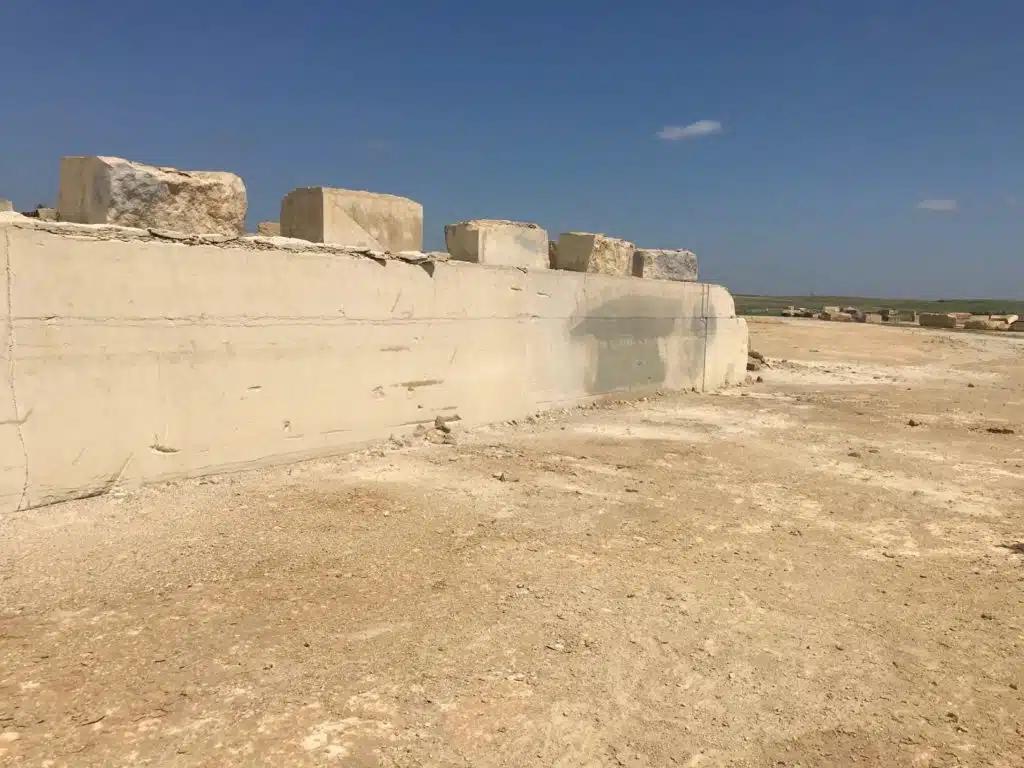
The thicker layers and less dense stone allow us to cut the stone with large saws, similar to a chainsaw. The saw is set to run in long stretches, cutting vertically into the bed of the stone and allowing us to create large blocks of stone. These blocks are later cut into slabs of varying thickness depending on the needs of the order.
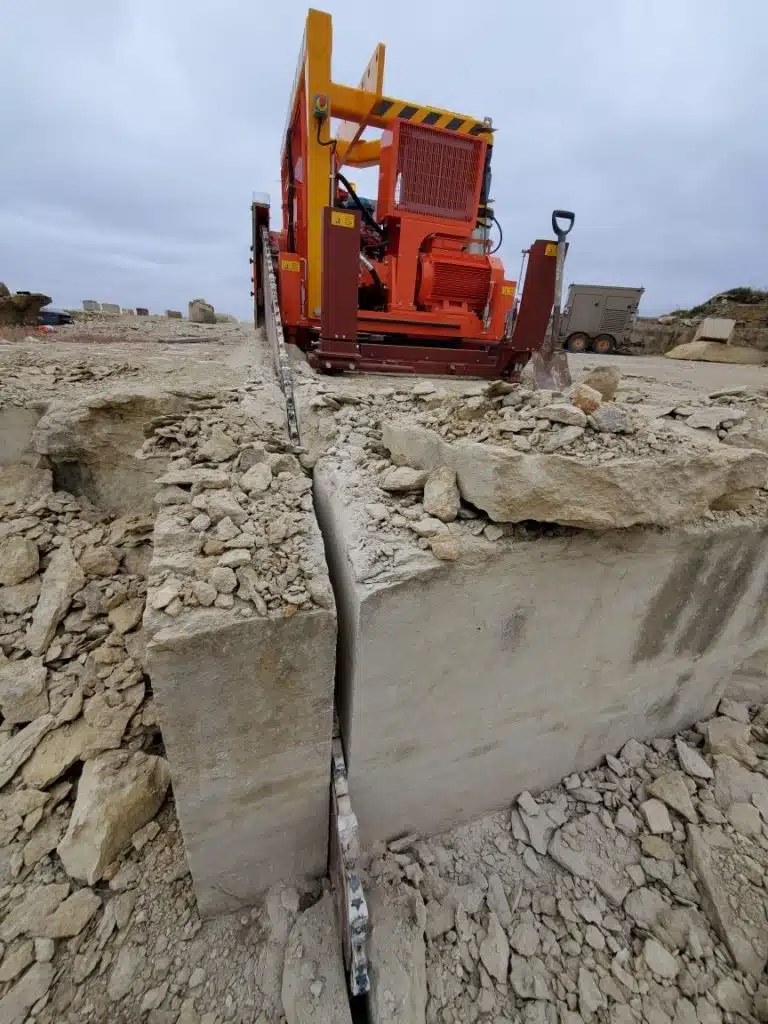

Seeing Beyond the Stone; What Story Does it Tell?
As unique and impressive as all these different quarries are, they do all share one thing in common that is also important to Buechel Stone; reclaiming the land and giving it useful life after we are done with it.
There are some people against quarrying of any kind, but often that is because they do not realize how important quarries are to the world. As long as mankind exists, there will be a need for natural stone raw material in almost all aspects of life.
At Buechel Stone, we take this responsibility seriously and are mindful of what we use. Although there are requirements for reclamation, it does not mean they are always followed – especially once you leave the modern world.

Stone imported to the United States dwarfs what is produced domestically. Historically it was used for gravestones and countertop slabs, but in the last twenty years, the amount of stone imported for veneer and landscaping has risen drastically. This is primarily because it is a cheap alternative to stone available domestically.

In many cases, wages are worse than low, they are non-existent, as third-world quarries often rely on slave laborers for the hardest and most grueling work. Slave labor often includes child labor, with children as young as five putting in long hours directly in the quarries. There have been numerous attempts by world organizations like the U.N. and the International Labour Organisation (ILO) to rid the world of these type of work arrangements, but this remains a problem around the world.

Buechel Stone sees its Rockstar workforce and the earth in the same way – both are vitally important to our success. We know for us to succeed long-term, we must be willing to do the things others might not. This blog’s quote, “Always look beyond what you can see,” is very fitting. When you purchase stone quarried by Buechel Stone, you are raising the bar on expectations for how people and resources are treated. When you purchase something else, what is beyond the stone? How was that person that created the stone in front of you treated? Was the land left in ruins after the quarry’s useful life was up?
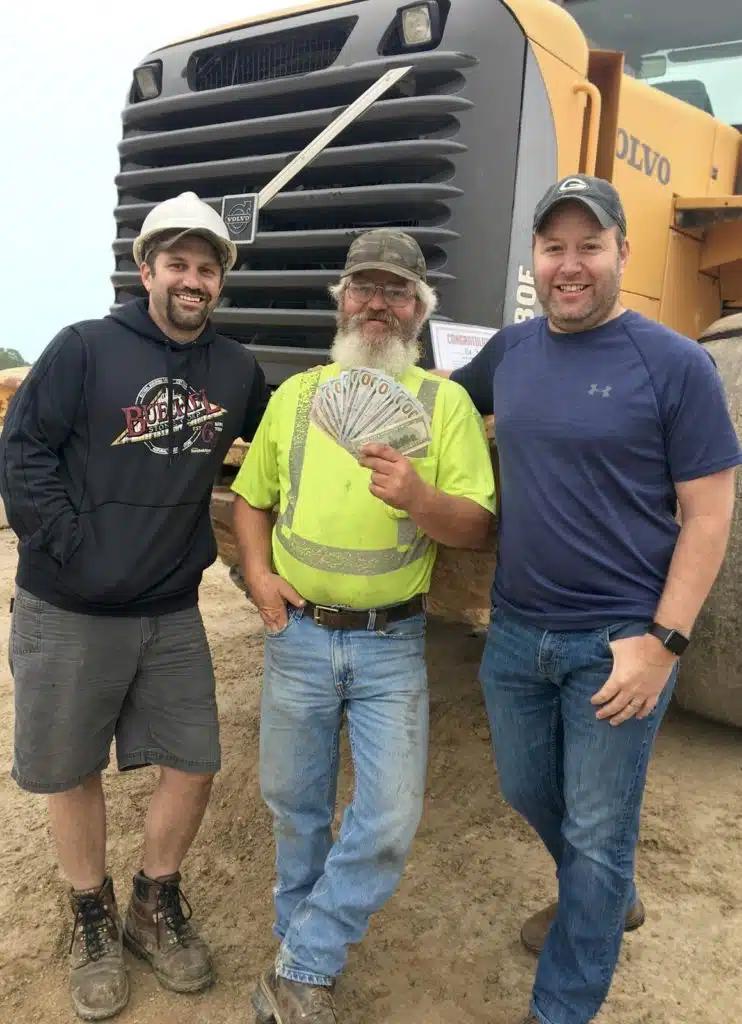
Do you care, or is it just another purchase?
Mike Buechel
Vice President
Buechel Stone Corp
Be the first to know about all our news and updates; subscribe to our newsletter and get Buechel Stone updates delivered to your inbox.